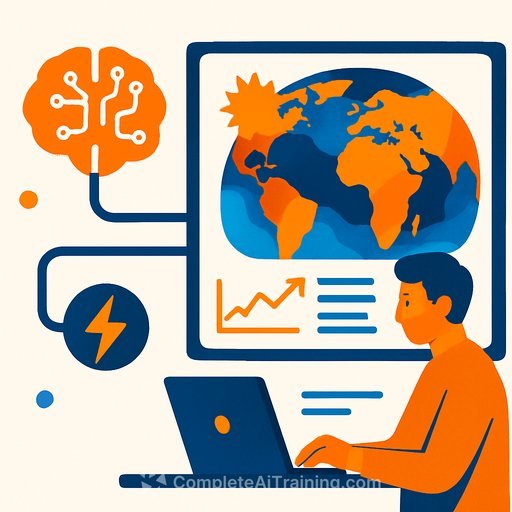SamudrACE Slashes AI Energy Use 3,750x: 1,500 Years of Climate in a Day
SamudrACE is a new AI climate emulator built by teams at Ai2 with collaborators from NYU, Princeton, M2LInES, and NOAA's GFDL. It runs 1,500 years of global climate in a single day on one NVIDIA H100 GPU while cutting energy use by 3,750x versus a traditional GCM baseline. That shift changes how fast climate questions can be tested and iterated.
Why this matters for research
Conventional physics-based GCMs can take weeks to produce a single 100-year run. That limits ensemble size, scenario diversity, and the pace of hypothesis testing. With SamudrACE, teams can push far larger ensembles and sensitivity studies inside normal budget and time constraints.
What's under the hood
The model couples 3D atmosphere/land and ocean emulators into a stable, physics-informed feedback loop. It links ACE2 (atmosphere/land) with Samudra (ocean) to capture interactions that previous emulators struggled with. Crucially, it reproduces emergent behavior such as the El Niño-Southern Oscillation (ENSO), a driver of global anomalies.
Against a baseline like the GFDL CM4-often run across thousands of CPU cores-SamudrACE achieves far higher throughput on a single H100 with a steep drop in energy use. That reduces both compute cost and the carbon impact of large-scale experiments. For context on the baseline, see the CM4 overview at NOAA GFDL. For ENSO background, see NOAA Climate.gov.
What this unlocks now
- Large ensembles to quantify uncertainty with tighter confidence in statistics of extremes.
- Scenario sweeps across forcings and boundary conditions within a single workday.
- Event-focused studies: multi-El Niño sequences, volcanic eruptions, or abrupt shifts.
- Faster policy stress tests: compare mitigation and adaptation strategies across many plausible futures.
Practical guidance for research teams
- Start in-domain: current training covers pre-industrial conditions. Treat out-of-distribution forcing with caution until retrained.
- Validate aggressively: use held-out years, compare spatial/temporal spectra, extremes, teleconnections, and conservation diagnostics.
- Track stability: monitor coupled energy and mass budgets and long-horizon drift.
- Use ensembles by default: quantify aleatoric and parametric uncertainty; report spread, not single runs.
- Integrate cleanly: containerize, pin versions, and log seeds to ensure reproducibility.
- Budget planning: one H100 can deliver throughput that previously needed a large CPU allocation; recalibrate queue strategies accordingly.
Current limits and roadmap
The current release is trained on pre-industrial states. The roadmap includes training on higher-CO2 futures, which will extend applicability to policy-era scenarios. Expect continued checks against trusted GCMs and targeted retraining where the emulator departs from key metrics.
Implications for policy and operations
Faster cycles mean agencies and labs can refresh risk estimates more frequently and at lower cost. That supports earlier probability assessments for extremes and better timing for preparedness. The energy savings also reduce the footprint of high-throughput climate experiments.
For teams building AI capability
If you're standing up AI pipelines for scientific computing and need structured upskilling, see curated options by role at Complete AI Training.
Your membership also unlocks:






